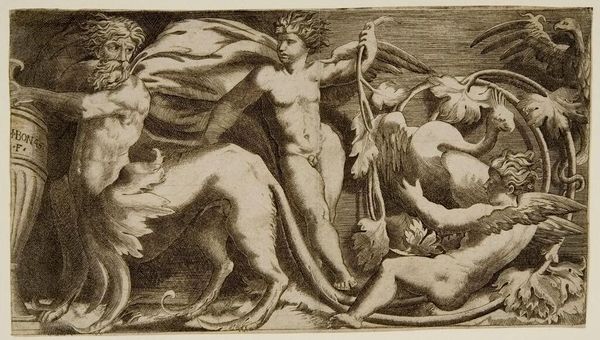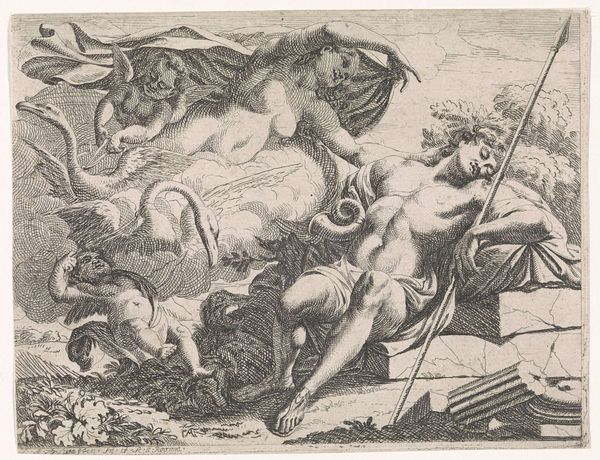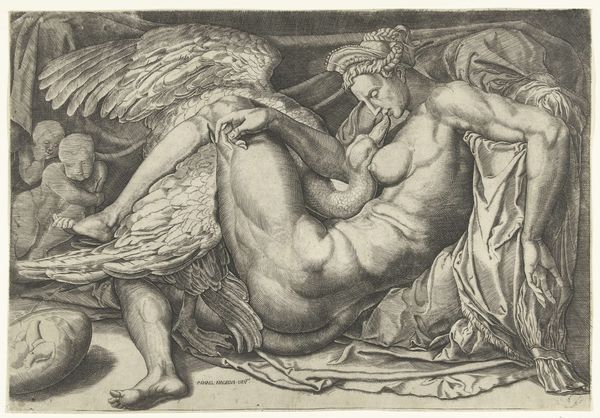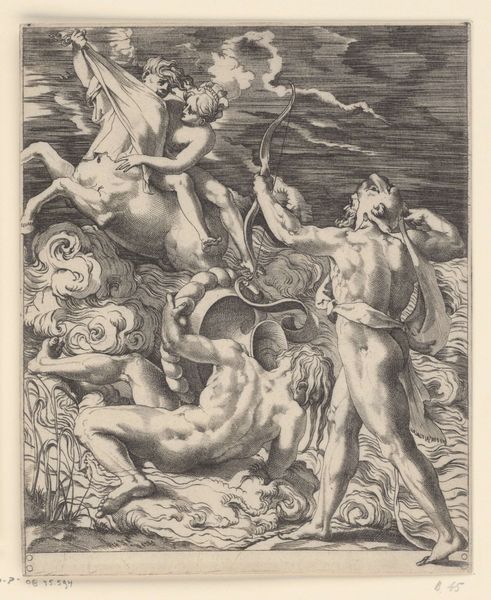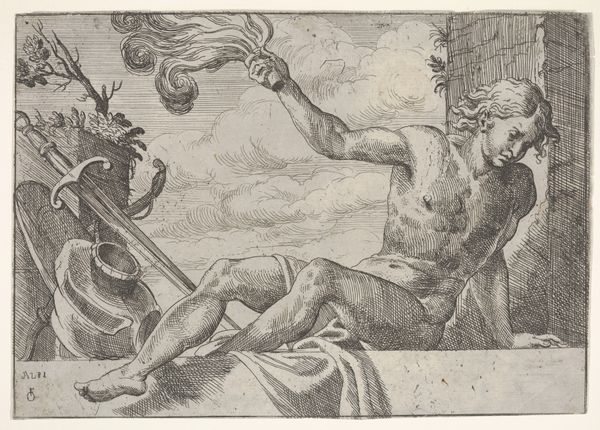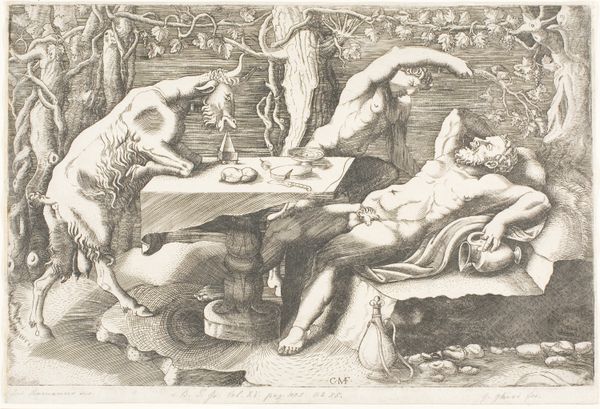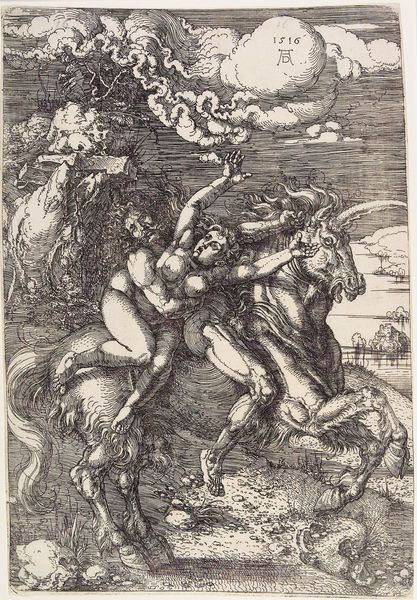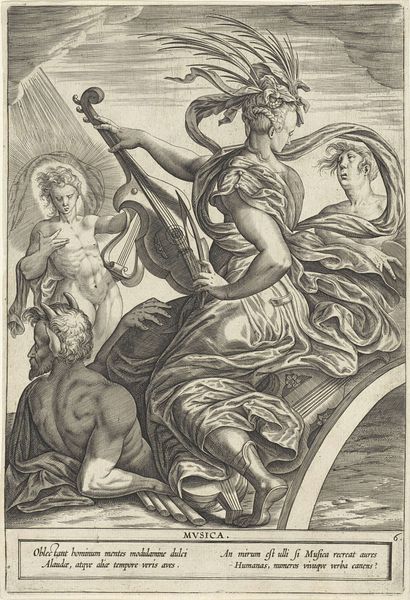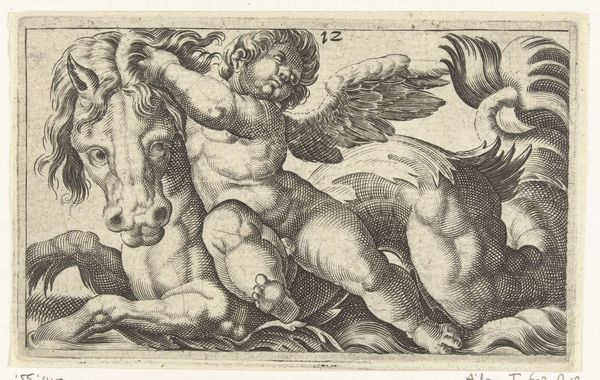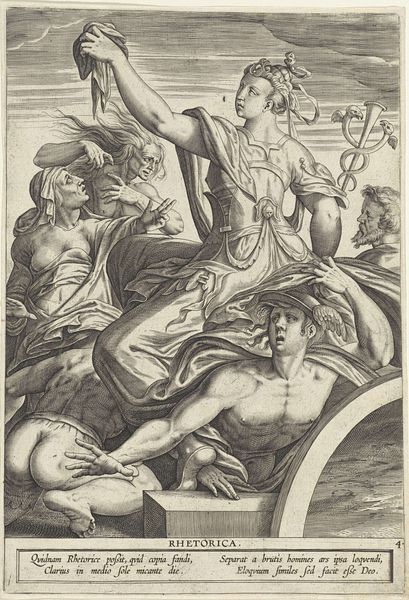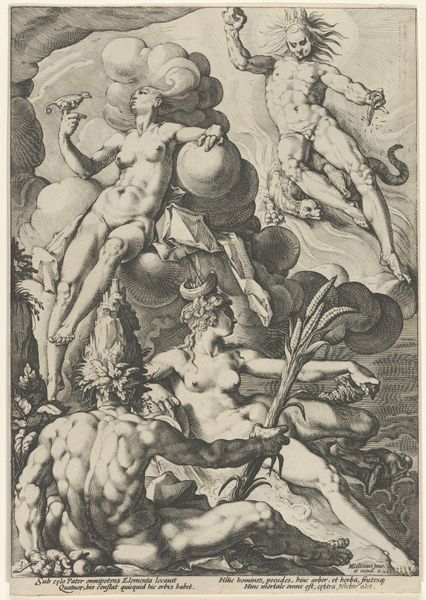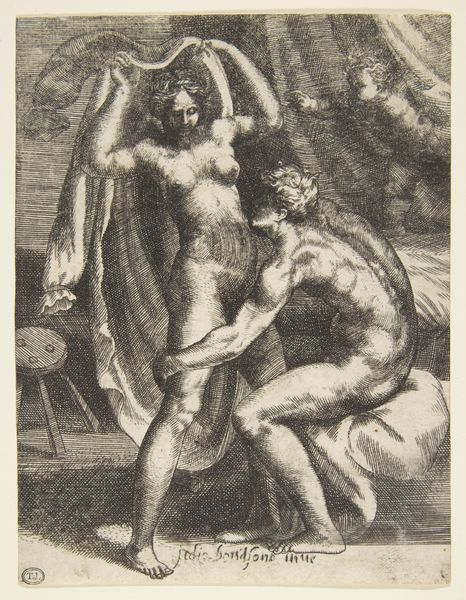
ornamental Frieze with two Putti and a Monster 1531 - 1590
0:00
0:00
drawing, print, engraving
#
drawing
#
allegory
# print
#
mannerism
#
figuration
#
genre-painting
#
history-painting
#
engraving
Dimensions: sheet: 6 9/16 x 11 5/8 in. (16.6 x 29.5 cm)
Copyright: Public Domain
Editor: This is "Ornamental Frieze with two Putti and a Monster" by Giulio Bonasone, made sometime between 1531 and 1590. It's an engraving, so a print on paper. It's pretty busy, lots of figures and… stuff happening. It has this strange combination of serious and playful; what's your take on this piece? Curator: This print encapsulates a key aspect of the Mannerist aesthetic, born out of a period of profound social and religious upheaval. Look at how Bonasone uses mythological figures. They aren’t just decorative; they’re allegories reflecting the anxieties of the time, especially around issues of power and control. What feelings do you have about the bodies represented? Editor: I think that it's visually arresting. The muscularity is very emphasized, maybe even exaggerated. But what does this exaggeration mean? Curator: The exaggerated musculature in Mannerist art often signifies a focus on idealized forms. But consider who these "ideals" exclude. This era was rife with conflict: religious wars, political instability, and the beginnings of colonial expansion. Figures like these putti existed in proximity with figures that represented new colonized people, reinforcing hierarchical worldviews. Is that making more sense? Editor: So you’re saying that the focus on ideal beauty served to reinforce existing social structures and exclude those considered "other?" Curator: Exactly! It’s about understanding how representations of the body can be tools for inclusion and exclusion. Artists like Bonasone were both reflecting and shaping the attitudes of their time. How do you see that legacy today? Editor: Wow, that’s really made me think differently about the piece! I had seen the beautiful technique but I missed the complex, perhaps even troubling, underlying messages. Thanks! Curator: And thank you for pointing out the visually arresting qualities. Seeing the visual mastery and understanding its historical use should allow a nuanced perspective when analyzing works of art and culture today.
Comments
No comments
Be the first to comment and join the conversation on the ultimate creative platform.
